#sources are linked in the text
Explore tagged Tumblr posts
Text


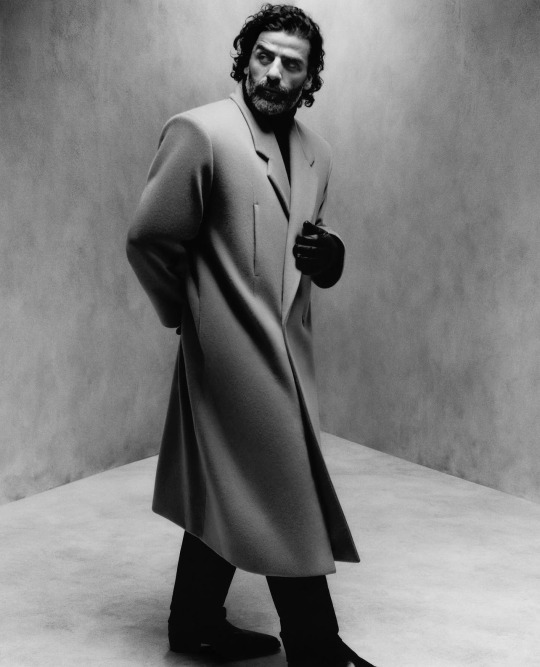




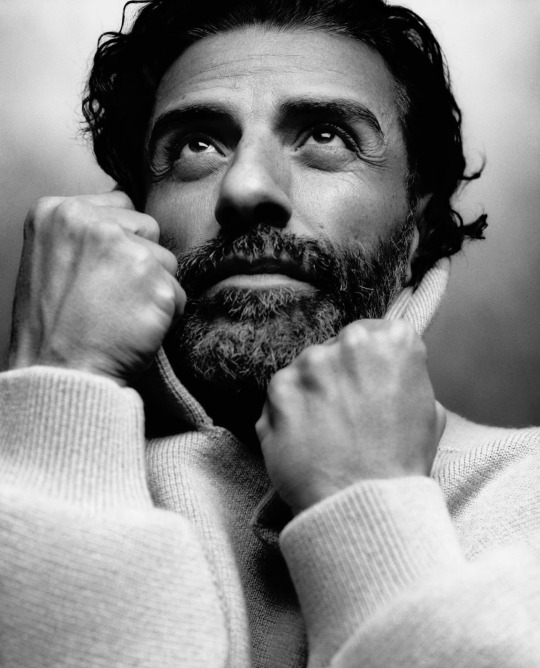

OHMYMOTHERFUCKINGGODDDDDD OSCAR ISAAC.
#the way i nearly consumed my entire fist.#i cant believe this#he#he.#he..#i need to just cry#im so happy he got to do this because hes BEEN wearing fog#bless this day#sources are linked in the text#oscar isaac#talkin shit
63 notes
·
View notes
Text




#orv fanart#orv#omniscient reader's viewpoint#yoo joonghyuk#kim dokja#joongdok#omniscient reader#putting two clowns in one dorm but they are unable to use clown to clown communication#I'M SORRY ABOUT THE ANT SIZED TEXT ON THE PROFILES TRULY THERE'S JUST A LOT OF BACKSTORY TO COVER...#I will rewrite and upload more concise profiles later including the other characters as they are slowly introduced in story (; u ;)/#but for now I didn't have the energy to edit it I apologise;;#also I've never tried writing omegaverse so it might be off I just thought the setting had incredible potential for gag manga so here we ar#if you're interested in the continuation I'm currently serialising it on twitter/bsky as I go so feel free to check there for updates#the source link will take you to the QRT thread containing current episodes + KDJ's childhood arc (ongoing) (^^)/
1K notes
·
View notes
Text
Much of our modern theater seems rooted in the Shakespearean discovery of the modern mind. We’re stealing instead from an earlier, less-traveled construct—the Greeks—lifting [The Wire’s] thematic stance wholesale from Aeschylus, Sophocles, Euripides to create doomed and fated protagonists who confront a rigged game and their own mortality. The modern mind—particularly those of us in the West—finds such fatalism ancient and discomfiting, I think. We are a pretty self-actualized, self-worshipping crowd of postmoderns and the idea that for all of our wherewithal and discretionary income and leisure, we’re still fated by indifferent gods, feels to us antiquated and superstitious. We don’t accept our gods on such terms anymore; by and large, with the exception of the fundamentalists among us, we don’t even grant Yahweh himself that kind of unbridled, interventionist authority.
But instead of the old gods, The Wire is a Greek tragedy in which the postmodern institutions are the Olympian forces. It’s the police department, or the drug economy, or the political structures, or the school administration, or the macroeconomic forces that are throwing the lightning bolts and hitting people in the ass for no decent reason. In much of television, and in a good deal of our stage drama, individuals are often portrayed as rising above institutions to achieve catharsis. In this drama, the institutions always prove larger, and those characters with hubris enough to challenge the postmodern construct of American empire are invariably mocked, marginalized, or crushed. Greek tragedy for the new millennium, so to speak. Because so much of television is about providing catharsis and redemption and the triumph of character, a drama in which postmodern institutions trump individuality and morality and justice seems different in some ways, I think.
An interview with David Simon
#david simon#the wire#analysis#tragedies#dark deeds#tv#love love love this#(source link doesn't work; linked text is to archived version)#x.
294 notes
·
View notes
Text
RESOURCES TO LEARN MORE ABOUT UKRAINE IN ENGLISH:
1. News and articles
Hromadske
Kyiv Independent
Ukraïner
2. Twitter
Writings from the war
United24
Ukraine Explainers
Ukrainian Art History
Ukrainian LGBTQ+ Military
ukrartarchive
Alice Zhuravel
Тетяна Denford
Oriannalyla
ліна
Mariya Dekhtyaruk
3. Instagram
Libkos (war photography)
rafaelyaghobzadeh (war photography)
mariankushnir (war photography)
marikinoo (illustrator)
olga.shtonda (illustrator)
polusunya (illustrator)
4. Videos (subtitles)
One day of evacuation with combat medics
Testimonies of tortures and sexual assault done by russians
How village in Kherson region lived under occupation
"Winter on Fire" documentary
Mariupol before and after
Tragedy of Nova Kakhovka dam
City of Izium after deoccupation
Entire village that was held in a basement for a month by russians
Life near the frontline in Zaporizhzhia region
Vovchansk after heavy russian shelling
"20 Days in Mariupol" documentary
5. TikTok
qirimlia
yewleea
thatolgagirl
showmedasha
ukraineisus
new4andy (all of the above accounts are educational, this one funny)
6. Other
National Museum of Holodomor Genocide (Holodomor and Digital History sections on a website have a lot of sources to learn about Holodomor)
Izolyatsia Must Speak (information about torture chamber in the russian-occupied Donetsk)
War Stories from Ukraine
Virtual museum of destruction in Kyiv region
Chytomo (about books and publishing)
Free translated books
Old khata project (photography project about rural architecture)
#feel free to add more reliable sources#please reblog#ukraine#russia#russia is a terrorist state#fuck russia#genocide#stand with ukraine#support ukraine#genocide of ukrainians#russian war crimes#important#video#text#txt#words#war#war photography#photography#news#article#link#resources#ukraine resources#world news#current events#activism#human rights#history#art
419 notes
·
View notes
Text
All on levels but physical this is me

#text#sillyposting#ferretposting#source is linked#stim toys#stim toy#pony bead pets#bead pets#silly little guy#who up muste they lids
91 notes
·
View notes
Text
#m6lancholiaa#glitter text not mine#source linked#video is mine ^_^#morute#mochette#sad bbydolls#morbid cute#creepy cute#forestcore#creepy and cute#forest#dark aesthetic#goth#gothcore#sad bbydoll#morbidette
80 notes
·
View notes
Text
IMPORTANT SCIENTIFIC DISCOVERY

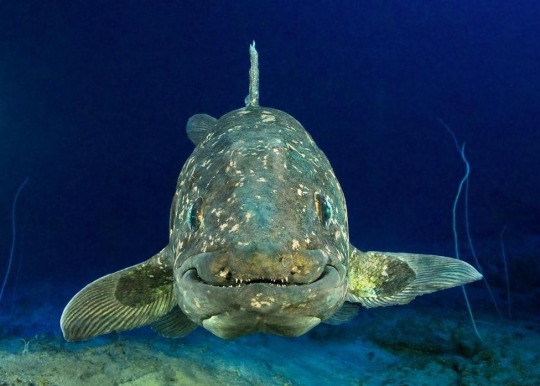


COELACANTHS CAN OWO!!!
#photos from nat geo article 'coelacanths can live to 100' tunglr mobile app wont let me add link#except bottom left which i literally cant find source for. its from a reddit post but they dont say where they got the footage#and the watermark is too crunchy to read#theyre gods most beautiful creature#also img desc is in alt text#coelacanth#Latimeria chalumnae#fish#animals#andy original
2K notes
·
View notes
Photo








i was looking through my drafts for the first time in years and found these gifs i made circa 2017 when i was deep diving through old (and now much older) halifax mooseheads videos on youtube. funny to think that the me that made them had no idea these two would play together again.
#i think the size limit on gifs was at 2mb at this point. things were hard okay. don't judge#no source links either cause there were no text or tags on the draft. obvi the president's cup and possibly the mem cup too tho#jonathan drouin#nathan mackinnon#mine#gifs#halifax mooseheads#colorado avalanche#pairings#qmjhl#chl#natejo#nate mackinnon#jo drouin
112 notes
·
View notes
Text




concept designs for alternate skins for Nini-tan by GRAPHICSAVER, 2001

#shell is usually the term i would use but i guess skin was the correct terminology for alternate shells?#i think i posted this before but idk if i had the source#artist:DEFTH#artist:GRAPHIC SAVER#nanika#unyu#niseharuna#2001#i dont think these were made into actual downloadable skins but i hope the catear glasses shell/skin is real ;w;#updates to this blog are gonna be slow sorry.. i want to focus on finishing the history of the baseware and the personaware incident but#sorting info and links from long dead text only Japanese bbs threads from 2001 and earlier without my ADHD meds is tough
67 notes
·
View notes
Text
friendly reminder that livelovecaliforniadreams is a bigoted tr*mpie before y'all decide on reblogging/liking that gifset of hers among any others she makes
#just a little psa because i know some fans weren't around for that in the offseason#happy to provide the links to the posts for anyone who needs a source#text#chenford
57 notes
·
View notes
Text



[DPxDC Crossovers] next ->
#link in source#dpxdc#batman#Jason Todd#Batfamily Members#Team Phantom - Character#Dick Grayson#Danny/Jason#bruce wayne#Canon-Typical Violence#Abduction#Play Fighting#Halfa Jason Todd#Ghost King Danny Fenton#more like princling#Bisexual Danny Fenton#Demisexual Jason Todd#Batfamily (DCU)#Jason Todd is a Batfamily Member#Jason Todd Needs A Hug#Danny Fenton Needs A Hug#Jack and Maddie Fenton's B- parenting#Smart Danny Fenton#background OCs - Freeform#Lazarus Pit Side Effects (DCU)#Hurt/Comfort#alt text#ao3#fanfic rec#a03 fanfic
112 notes
·
View notes
Text
FREENBECKY X NAMTANFILM!!!!!

#gap the series cast#pluto the series cast#text#freenbecky#namtanfilm#gl#thai gl#mine#photo link is in the source.
85 notes
·
View notes
Text

link Haven't heard anyone talk about this yet. Bisan has also shared a video about this.
#the acts of cruelty displayed by israel is so horrific and evil#alt text has transcription and first link has sources#free palestine
259 notes
·
View notes
Text
And the thing is. Speaking on a meta, Doylist level now. In actual Inuit shamanic practice, cutting out one's tongue (or any other body part) is not a real thing, at least not that I can find reference to anywhere. In fact, actual angakkuit have their own secret verbal language that they use to communicate with spirits (including their tuurngaq). Plus, shamans serve very important interpersonal functions within their communities, so removing their ability to speak would be worse than pointless.
So why is it a thing in The Terror? Well, the most obvious purpose is To Be Scary And Gory because Horror Genre. But fabricating a random "barbaric" practice (that doesn't even make any sense) to assign to indigenous people for shock value would be quite a choice for a show that punishes its characters for believing such lies (DON'T YOU KNOW THEY KILL CHILDREN EDWARD. CAN YOU IMAGINE. WHOMST COULD EVER DO SUCH A THING—), so I have to believe something more is going on here. What that something is, I'm not knowledgeable enough to say.
But I know it must be something. Because the following is an excerpt from an oral history series published by Nunavut Arctic College, Inuit Perspectives on the 20th Century:
In this chapter, the elders talk about shamanism and how one could become an angakkuq. In most cases, angakkuit did their own recruitment, identifying interesting potential candidates and offering to turn them into angakkuit (the person was always free to decline), [...]. The selected candidate would start to see their tuurngaq. In some rituals, the person becoming angakkuq was stabbed (they would not bleed) or shot (their tuurngaq would intercept the bullet).
Might the fact that the tuurngaq in The Terror failed to protect Silna's father in the first place (and failed to protect the Inuit family later as well, in both cases only attacking after the damage had already been done) imply something in itself? Plus the fact that Silna is very clearly not free to decline becoming an angakkuq...... plus the fact that her people banish her, yet allow Crozier to stay, another needlessly cruel and impractical act, just like the tongue-cutting...... It all feels like a deliberate statement. What that statement is would be the task of someone smarter than me to decipher.
#Silna#The Terror#Terror Meta#Source for the quote:#https://web.archive.org/web/20210417163011/http://www.tradition-orale.ca/english/dreams-and-angakkunngurniq-becoming-angakkuq-81.html#Sorry I'd have linked it in the post but I think tumblr still hides posts with links??#Starky's original posts#Starky's text posts#do u like how I managed to reference Hodgson even in a post that has nothing to do with him. all in a day's work for The Hodgblogger (TM)#I do think it's meaningful that we never see the social aspect of the shaman's role in the show when it's such a huge part of the job IRL.#Silna feels entirely disconnected from her community. That's in itself a sign something is wrong.#In my complete amateur philistine opinion lmao. The inherent hubris of me making these posts at all is so ridiculous.#I am Not fucking qualified <3 BUT NOBODY ELSE HAD BROUGHT IT UP YET. SO HERE WE ARE.#looking around myself like does anybody who knows wtf they're talking about want to chime in perchance
29 notes
·
View notes
Text


Reproduction Renaissance revival door handle Björkboda 25 by Byggnadsapoteket/Rakennusapteekki, Finland. Originally manufactured by Björkboda, Finland. Nickel-plated brass and wood; steel interior parts.
Most architectural hardware factories in Sweden, Russia, and Finland produced Renaissance revival door hardware of this type from the late 19th through early 20th centuries. This model is from the end of the 19th century and shows the ornate scalloped edge rosette plates and beaded detail common in that period.
#björkboda#finnish design#metalwork#door hardware#door handle#renaissance revival#architectural detail#I'm linking to the English version of the website for the curious under source#but I'm warning you right now the text is bad and appears to have been translated by an AI from Finnish without human review#so this is my translation and paraphrase from the Swedish version up above
18 notes
·
View notes
Text
Armored Core, Video Games, Mecha: A Cultural Study of A Genre.
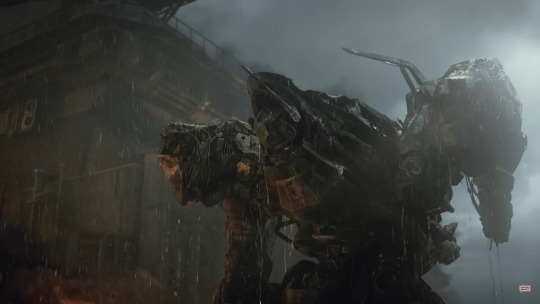
In 1997, From Software (フロム・ソフトウェア) released "Armored Core" (アーマード・コア) for the Sony PlayStation. While definitely not the first "Mecha Game" as we'll be referring to ad nauseam in this bizarre, overly long, essay thing of sorts- it more than the rest is arguable the most important. Through its mechanics, story, gameplay, and even setting- everything about Armored Core reinforces that it is the first Mecha IP made for the brand new at the time "video game medium" that fully embodied everything that defines the cultural and historical influences of the modern Mecha Genre, while redefining that genre for the newer medium. To this day, with the most recent release of "Armored Core VI: The Fires of Rubicon" in August of 2023, the series continues to uphold and redefine this legacy. Yet, what does any of that even mean?
To make a long story shortened, somewhat long once again; as we know it outside of Japan "Mecha", is a niche of a niche in some cases. Not necessarily that it's unpopular, or doesn't make an insane amount of money (which it is and does in both cases quite often), but in that it is a genre almost entirely defined by its roots in Japan, primarily through various Manga Comics and especially Animated Series. Go Nagai's (永井 豪) "Mazinger Z" (1972) is credited most often as the birth of the genre's identity, most notably as the first real breakout attempt at conceptualizing the idea of a large robot that was controlled through the use of a cockpit within the robot itself. In Go Nagai's words within the book "A Brief History of Japanese Robophilia"; "I wanted to create something different, and I thought it would be interesting to have a robot that you could drive, like a car."

From this idea and the incredible popularity of Mazinger Z, "Robot Anime" (ロボットアニメ) was born, and Go Nagai went on to create more influential works that helped further expand the genre as well as develop this particular flavor as "Super Robot". Now, Super Robot being the first and oldest sub-category to the genre makes what came after works like the aforementioned Mazinger Z and later "Getter Robo" (also from Go Nagai, 1974) fascinating from an outsider to the culture and times of the late 20th Century Japan. Without going too much into a side tangent, shows like Mazinger Z and Getter Robo were the foundation of which everything that would come to pass was built on. Discussing Mazinger Z and Getter Robo with friends and people who love it, however, the one thing that was constantly said was that "They still were and are, monster of the week animated shows", the Super Robots being genuinely not too dissimilar to how super heroes or super powered characters in other cartoons or comics were depicted other than they were both vehicle and the powers themselves. They are still shows about cool/surprising fights with evil monsters or wicked folk- and that's what they really want to be.
Not to say there's little under the surface (I would never dare to even humor a claim like that in regards to near any media), but for example- Getter Robo, which introduced the concept of "gattai" (合体), better known as "combination", where these super robots or aspects of them could "combine together" to create a bigger, stronger, or better robot- combined with the introduction of the show's "Getter Rays", the primary antagonists being what are genuinely, dinosaur aliens, Getter Robo has a very clear and distinct theme of "Evolution" that permeates through its entire core- but its also secondary to the actual point of the series from what I've been informed. To quote directly from a friend who's a massive fan and shill for the series: "This is the invention of the wheel, no one has thought to put trims on it," which is not a criticism at all- but I think it's important to especially point that out here and now that this is what the Super Robot era of early Mecha was, really cool and fun ideas for media that wanted to be surprising, fun, and fresh for the early 1970s.
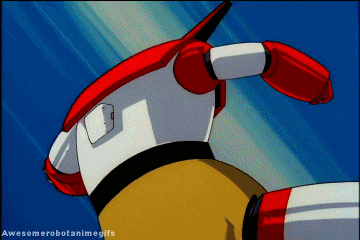
The other thing that was most interesting about the era of Super Robot, was that despite robots- the powers and abilities explored in these series were supernatural or magical in nature; Getter Rays for example is quite literally, human will made manifest- allowing their machines to fire beams of energy, transform their parts, amongst several other things. Some would say it's "on the nose", but frankly it's inspired and has persisted as an idea all the way to present in even modern Mecha that isn't Super Robot.
But then, what did come after the Super Robot era of early Mecha? When a genre has only escalated and expanded, going further into the fantastical and erratic energy of its fore-bearers and contemporaries; bigger, brighter, louder- where do we look once we've waged battle with every single light in the sky? When there's no battles left to be fought with aliens, kaiju, or other such monsters that threaten to snuff out our spark, try to tango with the human spirit and its indomitable will- eventually our sights go from the stars above, back to where all battles and conflict are directed at.
Each other.

(this post is continued in a series of reblogs, be sure to check them out!)
#mecha#mech#mechs#japan#culture study#essay#writing#armored core#ac#日本#ロボット#レアルロボット#メカ#armored core 6#personal essay#mobile suit gundam#gundam#スパーロボット#Whoof I'm really nervous about this I'll be honest#The Super Robot segment is definitely going to be the weakest part#As admittedly it's the one I'm least informed on#I'm eternally grateful for my friends that are into the roots of the genre#I'm also very open to constructive criticism#this post might be stuck in eternal edit checks but HEY I POSTED IT#which is more than I thought I would#woof wow okay right#thank you everyone#Will see how this pans out#I think the first update will just be linking my sources should tumblr allow me to add anymore to this wall of text and funny gifs#now I'm just yapping
26 notes
·
View notes